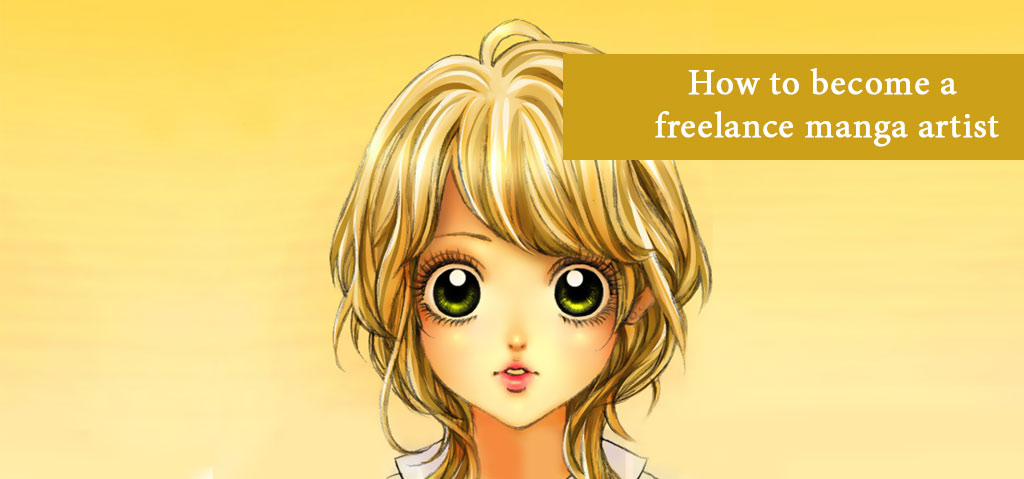
If you were asking anyone whether they knew about manga (Japanese comics) and anime a decade ago, they would probably be confused and unfamiliar with either or both of them. This does not happen anymore because there is a marked surge in anime and manga following in India and abroad; the frame is not contained within Japan. With the broadcast of internationally-famed Pokemon, Naruto, and Death Note, people have developed interests in areas concerning manga and anime.
Those who have an artistic eye are increasingly finding manga a viable alternative for economic gains. All of this gives more incentives to the already well-established manga industry in Japan and mileage to the budding manga industry beyond Japan.
Presently, there are abundant opportunities for manga artists, and the growing community of freelancers and employers have only strengthened possibilities. Since manga industry is internationally renowned billion dollars worth industry, it tremendously attracts aspiring artists to try out the uniquely crafted Japanese genres such as Shojo(targeting young girls), Shounen(targeting young boys), etc.
Attractive and lucrative it may sound, it is not that easy to become a freelance manga artist and requires a lot of research and patience from the part of the aspiring freelancer. However, this article will give you a comprehensive insight into the ways to become a successful freelance manga artist.
1. Job Requirements
In Japan, manga artists are generally well-qualified art students, although a few notable ones are known to have grown from amateur artists into professional ones through experience. Whatever the case may, manga drawing is analogous to a profession; therefore, you may have to watch out for certain requirements to fit in the manga industry. These requirements range from basic manga art styles to certified skills through professional courses.
The following are some of the requirements to become a freelance manga artist:
- Get certification through a diploma or other related programs. While in Japan, there are many professional manga institutes such as Kyoto Seika University; in countries such as India, you may not find any course on manga. This will be a problem, right? No!
Choose distance-learning courses which nowadays most manga institutes across the globe provide. You can get a shining certificate, which will add to your portfolio of skills and accentuate your presence in the freelance community. - If you are a teenager and heavily inspired by anime and manga but do not want to pursue a professional course in the manga art, then there is a way out: Pay proper attention to your art classes. Additionally, pay keen attention to literature classes since as a manga artist, you are naturally expected to build a coherent and wonderful story. This way you might save chunks of money, but remember you’d have a tough fight with professionals out there since you would be required to reflect in your portfolio exceptional skills and experience.
Either way, you will gather experience—a star factor in freelancing—helping you to construct a bright career in manga art.
2. Skills Needed
Whether or not you tug along a certificate, you should be able to put your skills into practical utility. There are certain skills indispensable to a manga artist, and it is these skills which will attract employers.
Here are some really important skills required from a manga artist:
- Innovation: There are millions of manga in the market, and this makes it all the more an important stage for innovation. Redundant, overworked ideas have come in the market with less or no success; therefore, the employer would want from you new and intriguing ideas.
- Drawing style: Manga style is distinctive, and it is this distinctiveness which has carved out its special place. Western comics and Japanese comics are essentially different, and it is important to thoroughly study the difference. Thus, you are required to be thoroughly aware of the drawing styles of manga.
- Genres are really important in the manga industry, and you are expected to have an in-depth knowledge about the same. You should be skillful enough to incorporate key elements of genres in your manga and not mess them up. If you wish to know more about the manga drawing styles, check out: http://kotaku.com/how-to-identify-the-basic-types-of-anime-and-manga-1538285518
- Employers, in this case, are usually comic magazines running out of stories or staff. They have fixed deadlines, which are you required to adhere to. This ability to meet the deadline is important since it is said that a timely publication of manga chapters or the manga itself creates greater and more positive interests among readers. The erratic publication will only affect revenues, which employers are not ready to loose.
- One really important skill expected from you is the ability to create moments. Any decent artist could draw up a manga, but that will not necessarily ensure its success. Without exciting, climactic moments being drawn up, a manga is only a collection of boring sketches.
3. Where To Find Work?
Manga industry is huge, and it is looking for more and more creative artists. The following enumerates working opportunities for freelance manga artists:
- In Japan, there are many manga magazines in circulation, and many of them are internationally renowned. Some of them include Weekly Shonen Jump, CoroCoro Comic, Bessatsu Margaret, Grand Jump, Jump Square, Be-Love, Ribbon, etc. Each of these deals with specific genres, which will help your taste. For instance, if you are into Shojo, you can apply to Bessatsu Margaret; Shonen¸ then you can apply to Jump Square; Josei (targeting adult female population), then apply to Bessatsu Friend.
You need to do a little homework on these magazines before applying to them. - Many of the aforementioned magazines such as Weekly Shonen Jump have an international network, with many of them being situated in the United States and the United Kingdom. If you think you’d be comfortable with working with American or British handlers of manga magazines, you can apply to them.
- If you do not want to create a full-fledged original manga, but assist in the development of someone else’ manga in areas such as illustration, scanning etc, then you can find ample opportunities online. There are dozens of online manga websites such as manga fox, which house a vast community of illustrators, scanners, and manga artists.
4. Create A Manga Of Your Own
Before going through the procedural requisites, you need to do this: Create a manga of your own. More experience and/or certification will not by itself guarantee a future as a freelance manga artist; you are expected to show off your skills in a full-fledged, original manga. Even when you apply to magazines, they’d expect you to furnish them your manga, or a sample.
While creating a manga of your own, keep in mind the following:
- Plot: The first and foremost thing you are required to do is to decide on a plot. Begin with a general idea, transforming into a more refined and specific idea gradually. Figure out major plot points, the driving factor in your story, the characteristics of pivotal characters, the possible end, the setting (historical, futuristic, etc), and whatnot. Once you know are prepared with a roadmap, unbox your drawing skills.
- Character design: This is traditionally the first step towards the creation of a manga. Once having imagined the characteristics and appearance of the characters, draw them. In this whole activity, you’d have to draw characters from each and every angle, decide on their clothing, face, hair, and whatnot. Familiarize yourself with every aspect of your design.
- Follow a style: As mentioned before, there are many manga styles to follow. Choose one and start working on it. Pick the one about which you are confident, and do not select a complicated one if you are not experienced in it. If you are unsure, explore distinct styles before deciding on one. This will help you incorporate greater clarity in your sketches, and will certainly impress your prospective employer.
- Create it: Yes, when you are done with all the aforesaid tasks, you are ready to create your manga.
- Publication: It is recommended you publish the manga on some platform. If you seek to derive profits from it, have it published in some magazine or online manga platform. If you do not seek to derive commercial profits from it, you can post the same on a major manga platform, If you have a wonderfully crafted manga in your kitty, then nobody could stop you from becoming a popular freelance manga artist in the country, or perhaps the world.
5. Manga Artist Salary
Pay rate will depend upon your qualifications and experience. If you have applied to top-class magazines or online manga portals, keep your rates high but open for negotiations. To know more about the pay rate, you should join manga communities open across the world and interact with members to understand the whole pay structure in this freelance world.
In case you have less or no experience, you should not place your bid unbelievably high since the other party might not take it seriously. Your pay rate should be commensurable with your experience and qualifications.
For more on freelance manga artists, check out: www.careerlancer.net




